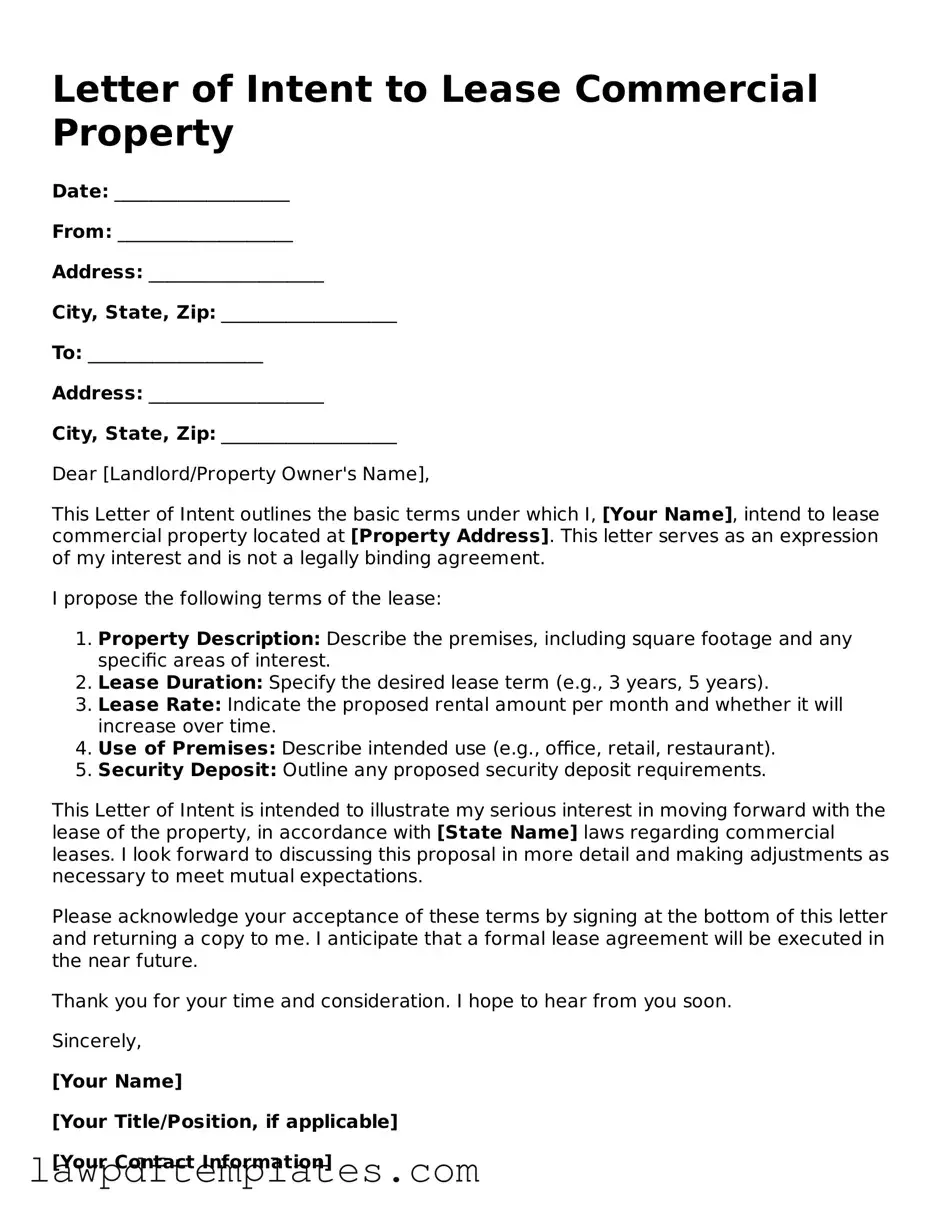Letter of Intent to Lease Commercial Property
Date: ___________________
From: ___________________
Address: ___________________
City, State, Zip: ___________________
To: ___________________
Address: ___________________
City, State, Zip: ___________________
Dear [Landlord/Property Owner's Name],
This Letter of Intent outlines the basic terms under which I, [Your Name], intend to lease commercial property located at [Property Address]. This letter serves as an expression of my interest and is not a legally binding agreement.
I propose the following terms of the lease:
- Property Description: Describe the premises, including square footage and any specific areas of interest.
- Lease Duration: Specify the desired lease term (e.g., 3 years, 5 years).
- Lease Rate: Indicate the proposed rental amount per month and whether it will increase over time.
- Use of Premises: Describe intended use (e.g., office, retail, restaurant).
- Security Deposit: Outline any proposed security deposit requirements.
This Letter of Intent is intended to illustrate my serious interest in moving forward with the lease of the property, in accordance with [State Name] laws regarding commercial leases. I look forward to discussing this proposal in more detail and making adjustments as necessary to meet mutual expectations.
Please acknowledge your acceptance of these terms by signing at the bottom of this letter and returning a copy to me. I anticipate that a formal lease agreement will be executed in the near future.
Thank you for your time and consideration. I hope to hear from you soon.
Sincerely,
[Your Name]
[Your Title/Position, if applicable]
[Your Contact Information]
Accepted By: ___________________
Date: ___________________
